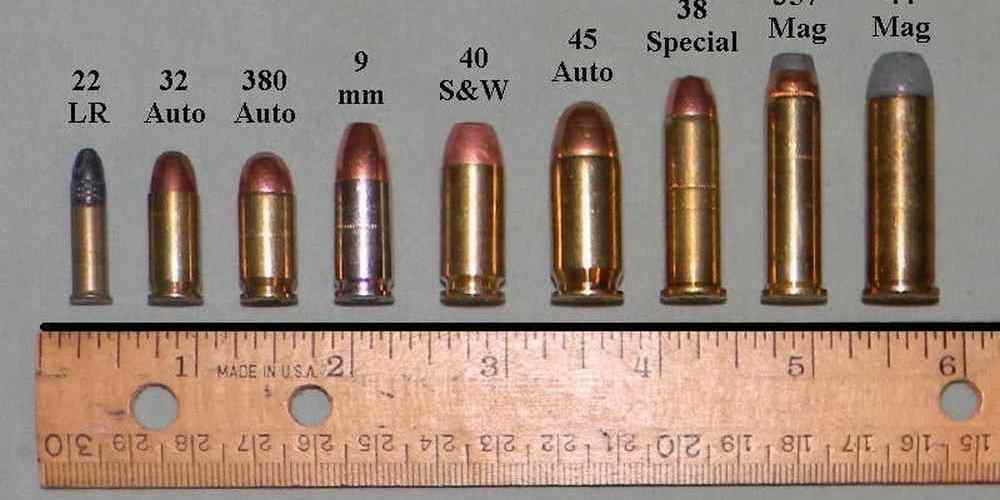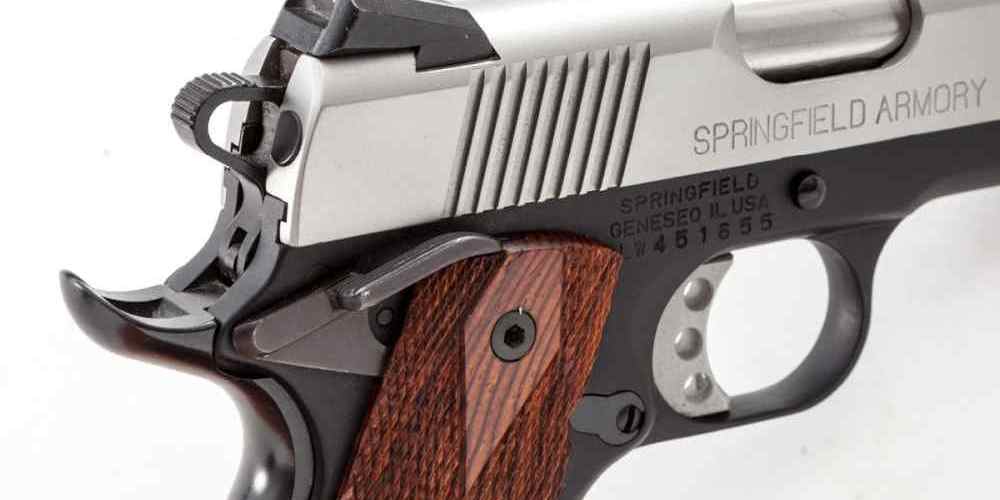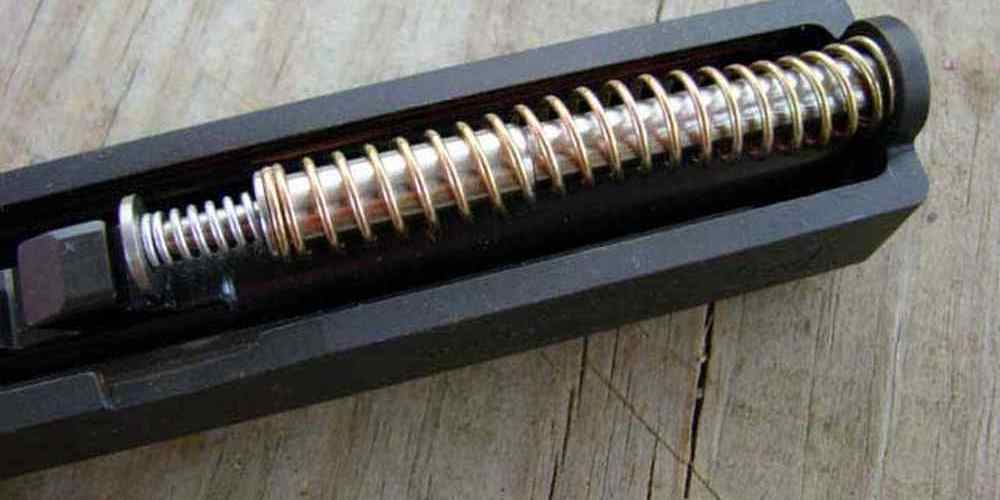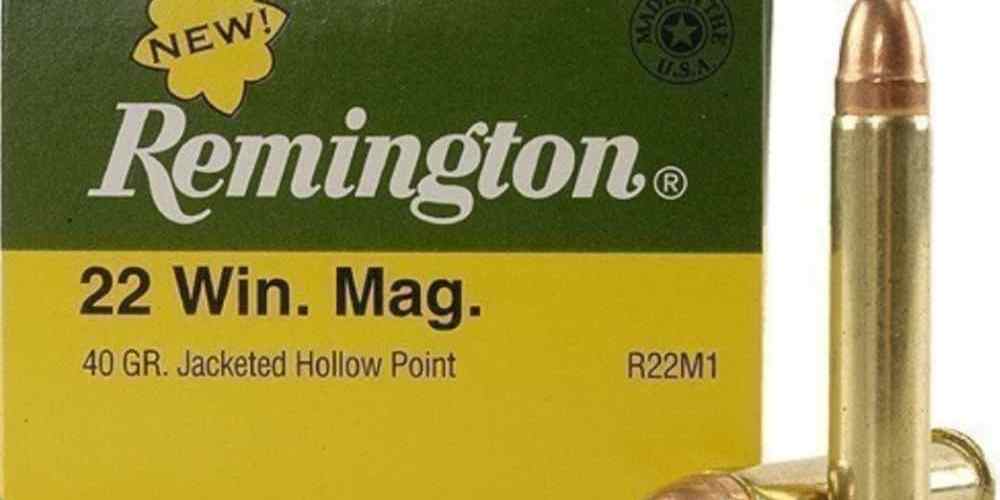“Smooth feeding for flawless performance in semi-auto pistols.”
Bullet Profile
Have you ever experienced feeding issues with your semi-automatic pistol? If so, you may have wondered why some types of ammunition feed better than others in these firearms. The answer lies in the bullet profile.
When it comes to semi-auto pistols, the shape and design of the bullet play a crucial role in how well it feeds into the chamber. A bullet with a round nose or flat point is more likely to feed smoothly than one with a sharp or pointed tip. This is because a round or flat-nosed bullet is less likely to catch on the feed ramp or other parts of the gun as it is being chambered.
Another factor that can affect feeding in semi-auto pistols is the overall length of the cartridge. If a cartridge is too long, it may not fit properly into the chamber, causing feeding issues. On the other hand, if a cartridge is too short, it may not provide enough resistance against the slide, leading to malfunctions. Finding the right balance between cartridge length and bullet profile is key to ensuring reliable feeding in your semi-auto pistol.
In addition to bullet profile and cartridge length, the weight of the bullet can also impact feeding in semi-auto pistols. Heavier bullets tend to have more momentum as they are being chambered, which can help them overcome any potential obstacles in the gun’s feeding mechanism. Lighter bullets, on the other hand, may not have enough force behind them to feed reliably. It’s important to choose ammunition that is within the recommended weight range for your specific pistol to ensure proper feeding.
Overall, selecting ammunition with a suitable bullet profile, cartridge length, and weight is essential for ensuring reliable feeding in semi-automatic pistols. By understanding how these factors can impact feeding performance, you can choose ammunition that will work best in your firearm.
So next time you’re at the range or preparing for a competition, take some time to consider the bullet profile of your ammunition. By choosing rounds that are designed for optimal feeding in semi-auto pistols, you can minimize malfunctions and enjoy a smoother shooting experience. Remember, when it comes to ammo selection for your semi-auto pistol, bullet profile matters.
Powder Charge
When it comes to semi-automatic pistols, one of the key factors that can affect their performance is the type of ammunition used. Some shooters may notice that certain types of ammo feed better in their semi-auto pistols than others. This can be due to a variety of factors, one of which is the powder charge used in the ammunition.
Powder charge refers to the amount of gunpowder contained in each cartridge. The powder charge plays a crucial role in how the ammunition functions, particularly in semi-automatic pistols. A powder charge that is too low may not generate enough energy to cycle the action of the pistol properly, leading to feeding issues and potential malfunctions. On the other hand, a powder charge that is too high can result in excessive recoil and increased wear on the firearm.
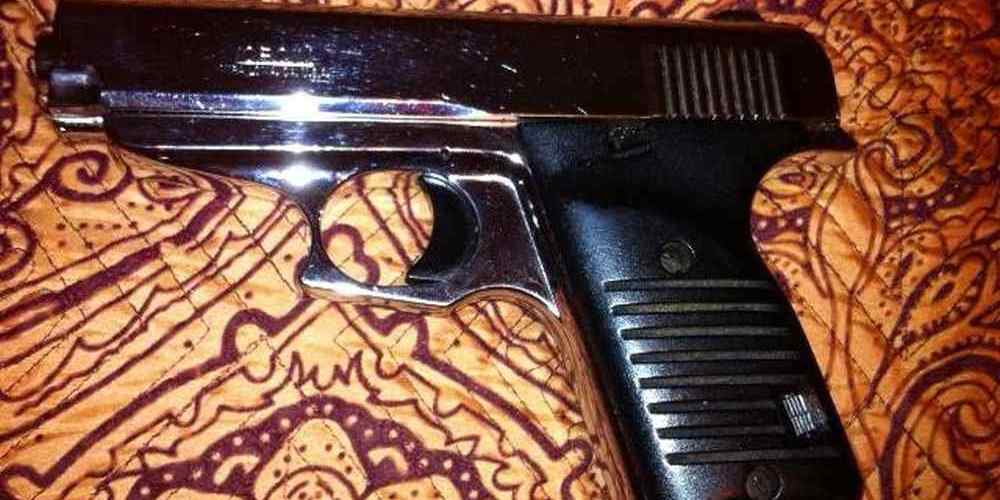
When it comes to semi-auto pistols, finding the right balance in powder charge is essential for reliable feeding. Ammunition manufacturers carefully design their cartridges to ensure that they provide enough energy to cycle the action of a semi-auto pistol without causing excessive recoil or wear on the firearm. This means that certain types of ammo with specific powder charges may feed better in semi-auto pistols than others.
Another factor to consider when it comes to powder charge is the type of propellant used in the ammunition. Different powders have varying burn rates, which can affect how efficiently they generate energy to cycle the action of a semi-auto pistol. Powders with faster burn rates may provide a quick but sharp impulse of energy, while powders with slower burn rates may deliver a more gradual and sustained push.
The burn rate of the powder can impact how well the ammunition feeds in a semi-auto pistol. If the powder burns too quickly, it may not generate enough energy to cycle the action fully, resulting in feeding issues. Conversely, if the powder burns too slowly, it may not provide enough pressure to cycle the action reliably.
In addition to powder charge and burn rate, another factor that can influence how well ammo feeds in a semi-auto pistol is bullet weight. Heavier bullets typically require more energy to cycle the action compared to lighter bullets. This means that ammo with heavier bullets may require a higher powder charge to function properly in a semi-auto pistol.
When selecting ammunition for a semi-auto pistol, shooters should consider factors such as powder charge, burn rate, and bullet weight to ensure reliable feeding. Experimenting with different types of ammo can help shooters find what works best for their particular firearm. It’s essential to remember that not all ammunition will perform equally well in every semi-auto pistol due to variations in design and tolerance levels.
In conclusion, when it comes to why some ammo feeds better in semi-auto pistols than others, powder charge plays a critical role. Finding the right balance in powder charge, along with considering factors such as burn rate and bullet weight, can help shooters achieve reliable feeding and optimal performance from their firearms. By understanding these factors and experimenting with different types of ammo, shooters can find what works best for their specific semi-auto pistol.
Case Material
When it comes to selecting ammunition for your semi-automatic pistol, there are a few factors to consider. One of the key elements that can impact how well your pistol feeds ammunition is the material of the casing. Different materials have different properties that can affect how smoothly the ammunition cycles through your pistol.
One of the most common materials used for casings is brass. Brass is a popular choice because it is durable, corrosion-resistant, and easy to reload. Brass casings also have some flexibility, which can help them expand and contract as needed during the firing process. This flexibility can be especially important in semi-automatic pistols, where the casing needs to be able to move smoothly through the ejection port and into the chamber.
Another material that is sometimes used for casings is steel. Steel casings are generally less expensive than brass, which can make them an attractive option for shooters on a budget. However, steel casings are not as flexible as brass and can sometimes cause feeding issues in semi-automatic pistols. Steel casings may not expand and contract as easily as brass, which can lead to malfunctions such as failures to feed or extract.
Aluminum is another material that is sometimes used for casings, although it is less common than brass or steel. Aluminum casings are lightweight and inexpensive, but they are also less durable than brass or steel. Like steel casings, aluminum casings may not be as flexible as brass and can sometimes cause feeding issues in semi-automatic pistols.
In general, brass casings tend to feed better in semi-automatic pistols than steel or aluminum casings. The flexibility of brass allows it to expand and contract as needed during the firing process, which can help prevent malfunctions such as failures to feed or extract. Brass also tends to be more reliable and consistent than steel or aluminum casings, which can help ensure that your pistol cycles smoothly every time you pull the trigger.
Of course, there are other factors that can affect how well your pistol feeds ammunition, such as bullet shape, weight, and powder charge. However, the material of the casing is an important consideration that should not be overlooked. If you are experiencing feeding issues with your semi-automatic pistol, it may be worth trying different types of ammunition with brass casings to see if that improves performance.
In conclusion, the material of the casing can have a significant impact on how well your semi-automatic pistol feeds ammunition. Brass casings tend to be the best choice for feeding reliability, thanks to their flexibility and consistency. While steel and aluminum casings may be less expensive, they are also more prone to causing feeding issues in semi-automatic pistols. If you are having trouble with feeding in your pistol, consider switching to ammunition with brass casings to see if that helps improve performance.
Overall Length
When it comes to semi-automatic pistols, one of the most important factors to consider is the type of ammunition you use. Some ammo feeds better in these types of firearms than others, and understanding why can help improve your shooting experience.
One key factor that affects how well a round feeds in a semi-auto pistol is its overall length. The overall length of a cartridge refers to the distance from the base of the casing to the tip of the bullet. This measurement is critical because it determines how the round interacts with the feeding mechanism of the pistol.
In general, shorter overall length cartridges tend to feed more reliably in semi-auto pistols. This is because shorter rounds are less likely to get caught on the feed ramp or other parts of the gun as they move from the magazine into the chamber. When a round gets stuck during the feeding process, it can cause malfunctions such as failures to feed or stovepipes.
On the other hand, longer overall length cartridges are more prone to feeding issues in semi-auto pistols. This is because the extra length can cause the bullet to contact the feed ramp at an awkward angle, leading to feeding problems. Additionally, longer rounds may not seat properly in the chamber, which can also result in malfunctions.
It’s worth noting that not all semi-auto pistols are created equal when it comes to overall length compatibility. Some guns are designed to handle a wider range of cartridge lengths than others. However, as a general rule of thumb, shorter rounds tend to feed better in most semi-auto pistols.
If you’re experiencing feeding issues with your semi-auto pistol, it may be worth experimenting with different types of ammunition to see if changing the overall length improves reliability. Look for cartridges that are known for their compatibility with your specific firearm model, and don’t be afraid to try out different brands until you find one that works well.
In addition to overall length, other factors can also affect how well a round feeds in a semi-auto pistol. The shape of the bullet, the type of bullet coating or jacketing, and even the weight of the projectile can all play a role in feeding reliability.
Ultimately, finding the right ammo for your semi-auto pistol is a process of trial and error. It may take some time and experimentation to determine which rounds work best in your specific firearm. However, by paying attention to factors like overall length and other key characteristics, you can increase your chances of finding ammunition that feeds reliably and performs well on the range.
In conclusion, overall length is an important factor that affects how well a round feeds in a semi-auto pistol. Shorter rounds tend to feed more reliably than longer ones, so if you’re experiencing feeding issues with your firearm, it may be worth trying out different types of ammunition. By paying attention to factors like overall length and experimenting with different brands and bullet shapes, you can improve reliability and performance with your semi-auto pistol.
Magazine Design
When it comes to semi-automatic pistols, one of the most important factors to consider is how well the ammunition feeds into the gun. This can have a significant impact on the reliability and performance of the firearm. Some ammunition feeds better in semi-auto pistols than others, and this can be attributed to a variety of factors, including magazine design.
One of the key elements that can affect how well a particular type of ammunition feeds in a semi-auto pistol is the shape and design of the magazine. Magazines come in various shapes and sizes, and some are better suited for certain types of ammunition than others. For example, some magazines are designed specifically for hollow point bullets, while others may work better with full metal jacket rounds.
Another factor that can influence how well ammunition feeds in a semi-auto pistol is the angle at which the rounds are stacked in the magazine. The angle at which the rounds are positioned can impact how smoothly they feed into the chamber of the gun. Some magazines are designed with a more pronounced angle, which can help ensure reliable feeding, while others may have a more straight stack design that could potentially cause feeding issues.
In addition to magazine design, the overall quality of the ammunition itself can also play a role in how well it feeds in a semi-auto pistol. Higher-quality ammunition tends to have better consistency in terms of dimensions and weight, which can lead to more reliable feeding. Cheaper or lower-quality ammunition may have inconsistencies that can cause feeding issues.
The weight of the bullet can also impact how well it feeds in a semi-auto pistol. Heavier bullets may have more difficulty cycling through the gun compared to lighter bullets. This is because heavier bullets require more energy to push them into the chamber, which can result in feeding issues if the gun is not properly tuned for that specific type of ammunition.
Furthermore, the overall design and construction of the pistol itself can also affect how well certain types of ammunition feed. Some pistols may have tighter tolerances or different feeding mechanisms that work better with specific types of ammunition. It’s important for gun owners to understand their particular firearm and what types of ammunition work best with it to ensure optimal performance.
In conclusion, there are several factors that can influence how well certain types of ammunition feed in semi-auto pistols. Magazine design, bullet weight, overall ammunition quality, and pistol construction all play a role in determining feeding reliability. By understanding these factors and choosing the right combination of components, gun owners can ensure that their semi-auto pistol functions reliably and effectively with their chosen ammunition. Ultimately, proper maintenance and attention to detail are key to maximizing performance and ensuring a positive shooting experience with any semi-automatic pistol.




